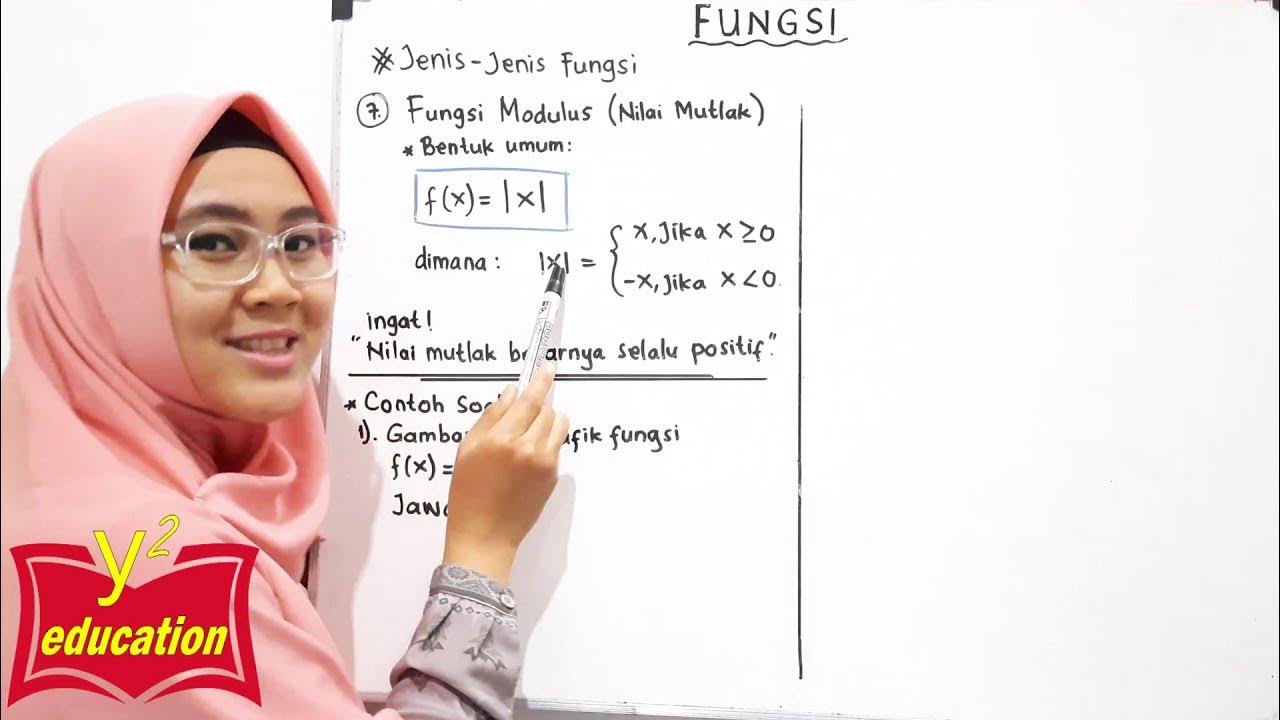7.5 Fungsi Singular (2 dari 3)
Summary
TLDRThis video discusses the concept of the Rem function, a mathematical function related to time and slopes, focusing on how it behaves with positive and negative time values. The explanation includes the visual representation of the Rem function, integration of the unit step function to obtain it, and its relationship with other functions like the Delta function. Additionally, the video demonstrates practical examples of how to manipulate and integrate these functions, as well as their real-world applications, providing a comprehensive understanding of these important mathematical concepts in signal processing.
Takeaways
- 😀 The rem function (unit ramp function) has a value of zero for negative time values and a slope for positive time values.
- 😀 The rem function can be shifted to the left or right on the time axis, affecting its graphical representation.
- 😀 Mathematically, the rem function can be expressed as: 0 for t < 0 and P for t ≥ 0.
- 😀 Shifting the rem function introduces a change in its mathematical expression based on the shift direction (left or right).
- 😀 The rem function can be obtained by integrating the unit step function (U(t)) over time.
- 😀 There is a direct relationship between the unit step function, rem function, and delta function in signal processing.
- 😀 Integrating the unit step function yields the rem function, while differentiating the rem function results in the delta function.
- 😀 A graphical representation of the rem function shows a ramp-like increase after t = 0.
- 😀 The delta function, an impulse function, is represented as a sharp spike at specific time points.
- 😀 A practical example involves combining multiple unit step functions to model a gate function with a value that changes at specific time intervals.
- 😀 Derivatives of functions involving unit step functions lead to delta functions, as shown by differentiating the gate function example.
Q & A
What is the main focus of the video script?
-The video discusses the mathematical concept of the 'rem function,' its relationship with the unit step function, and how to express it using mathematical notation.
How is the rem function defined in the script?
-The rem function is defined as a function that is zero when the time variable (t) is negative, and has a slope (or gradient) when t is positive. It is mathematically expressed as a function where for t < 0, the value is 0, and for t ≥ 0, the value is some positive constant.
What graphical representation is used to describe the rem function?
-The rem function is illustrated as a graph with a slope for positive values of t, and a flat line at 0 for negative values of t. The function is shown shifting to the right or left based on changes in its time variable, t.
How is the rem function obtained mathematically?
-The rem function can be obtained by integrating the unit step function (U(t)) over time. This integration leads to the rem function, expressed as ∫ U(t) dt.
What is the relationship between the unit step function, rem function, and delta function?
-The unit step function is integrated to obtain the rem function, while the rem function, when differentiated, leads to the delta function. The delta function is a mathematical impulse, and its properties are crucial in understanding these functions.
What role does the delta function play in the video?
-The delta function is discussed as the result of differentiating the rem function, and it represents an impulse or sharp change in value at a specific point, which is important for analyzing systems in engineering and physics.
How does the script describe the shifting of the rem function?
-The rem function can be shifted to the right or left by modifying the time variable t. This shift is shown in the script with specific examples where the function is shifted to t - t0, indicating a translation in time.
What example is used to explain the rem function?
-An example with a unit step function is used to explain how the rem function behaves. The script demonstrates a graphical shift of the function, both to the right and left, showing how the values change when t is adjusted.
What is the significance of the graphical example given in the script?
-The graphical example demonstrates how the rem function and its shifted versions behave in a system, helping to visualize the mathematical concept. It also shows how the delta function arises when differentiating the rem function.
What is the final takeaway from the script?
-The final takeaway is the relationship between the unit step function, rem function, and delta function, and how these are applied in mathematical modeling, particularly in signal processing and system analysis.
Outlines

Этот раздел доступен только подписчикам платных тарифов. Пожалуйста, перейдите на платный тариф для доступа.
Перейти на платный тарифMindmap

Этот раздел доступен только подписчикам платных тарифов. Пожалуйста, перейдите на платный тариф для доступа.
Перейти на платный тарифKeywords

Этот раздел доступен только подписчикам платных тарифов. Пожалуйста, перейдите на платный тариф для доступа.
Перейти на платный тарифHighlights

Этот раздел доступен только подписчикам платных тарифов. Пожалуйста, перейдите на платный тариф для доступа.
Перейти на платный тарифTranscripts

Этот раздел доступен только подписчикам платных тарифов. Пожалуйста, перейдите на платный тариф для доступа.
Перейти на платный тарифПосмотреть больше похожих видео

Relasi dan Fungsi [Part 4] - Notasi, Rumus, dan Nilai Fungsi

Calculus- Lesson 8 | Derivative of a Function | Don't Memorise

Aula 02 - Função do Segundo Grau (Função Quadrática): Concavidade de uma Parábola

Nilai Mutlak • Part 1: Konsep, Definisi, Sifat, dan Fungsi Nilai Mutlak

Fungsi #Part 13 // Jenis-jenis Fungsi // Fungsi Modulus // Fungsi Mutlak // Grafik, Domain , Range

Bioquímica Clínica 03/03
5.0 / 5 (0 votes)
